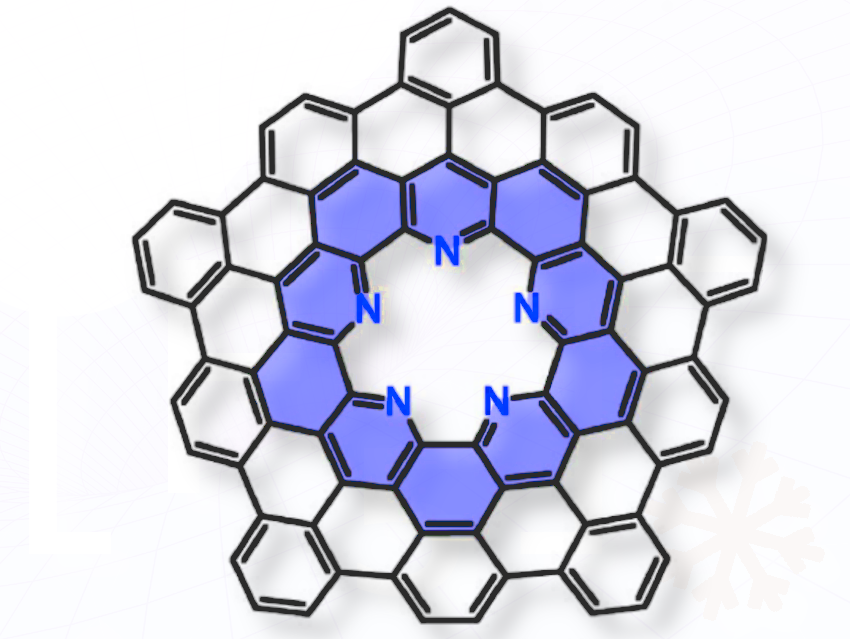J. Michael Gottfried, Philipps-Universität Marburg, Germany, and colleagues have created a nitrogen-doped curved nanocarbon molecule called C₈₅N₅ (a pentaazaquintulene) directly on a gold surface Au(111), using stepwise chemical reactions that link and fuse smaller building blocks.
They found that the molecule naturally forms a dome-like shape that can be flipped inside-out with the tip of a scanning tunneling microscope. In its convex conformation, it captures a single gold atom in its central cavity through bonds with nitrogen atoms. The molecule acts like a tiny “molecular bowl” that can trap and release a gold atom on command.
The shape and electronic structure of the N-doped quintulene C₈₅N₅ and its gold complex were studied using noncontact atomic force microscopy (nc-AFM), scanning tunneling microscopy (STM), and scanning tunneling spectroscopy (STS). The molecule shows a HOMO–LUMO gap of 2.95 eV, which decreases slightly (by 0.03 eV) when it binds a gold atom.
According to the researchers, their work advances the bottom-up creation of curved cycloarenes and deepens understanding of their structure and electronics at the single-molecule scale. Nonplanar, metal-binding carbon nanostructures are important for future molecular electronics and catalysis.
- On-Surface Synthesis of a Nitrogen-Doped Curved Cycloarene: π-Extended Pentaazaquintulene and Its Gold Complex
Zilin Ruan, Olaf A. Kleykamp, Kiyan Linus Haiko Pohl, Tim Naumann, L. Alix Kaczmarek, Anton S. Nizovtsev, Eugen Sharikow, Jörg Sundermeyer, Doreen Mollenhauer, J. Michael Gottfried
J. Am. Chem. Soc. 2025
https://doi.org/10.1021/jacs.5c11883




